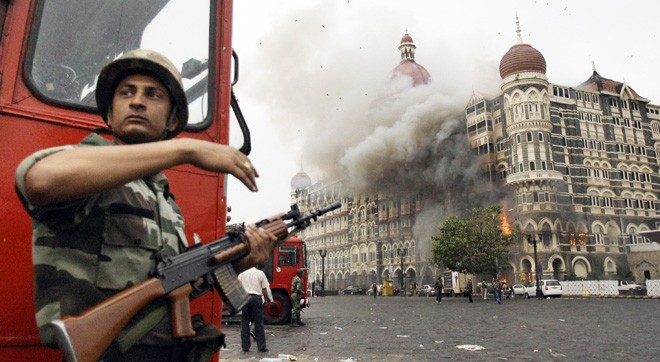
At least four Muslims flew directly from Mumbai for Iraq last May

The nature of the jihadist terror threat to India is changing rapidly. While the threat from Pakistan-based jihadist organisations remains current, India is also witnessing the rise of self-motivated, ideologically inspired, home-grown jihadists. Reports appearing in the Indian media indicate that by the middle of this year more than a hundred Indian Muslims were already fighting in Iraq, Syria, and Afghanistan.
In a video released on September 3, al-Qaeda leader Ayman Al-Zawahiri announced the establishment of al-Qaeda’s new anti-India branch. Al-Zawahiri noted that the objective of the new organisation, formally known as "al-Qaeda Jihad Organisation in South Asia", is to erase international borders created by the British in 1947 to divide the Muslims of South Asia.
At one level, there is nothing new in the video’s timing, as it had been coming. From mid-2012, al-Qaeda leaders in Pakistan began evolving a jihadist framework for the broader South Asian region in the wake of anti-Muslim riots in Myanmar and India’s northeastern state of Assam.
In a statement in September 2012, Ustad Ahmad Farooq, who is the first Pakistani to be appointed to a senior-level position in al-Qaeda and heads its department of preaching and media for Pakistan, warned India that the riots in Assam "provide impetus for us to hasten our advance towards Delhi".
Ustad Farooq and Maulana Asim Umar are two militants who have advised the Arab leadership of al-Qaeda to evolve a wider South Asia strategy. From sometime in 2008 when several top al-Qaeda commanders were tortured in the Pakistani prisons, al-Qaeda took advice from Farooq and Umar, declared Pakistan army as apostate force. They produced academic research that traced Pakistan army’s "anti-Muslim" role back to the 1757 War at Plassey, arguing that Pakistani soldiers (being part of British regiments before 1947) have always fought against Muslims at Plassey, at Delhi in 1857, and in the first and second world wars in Baghdad and Palestine, and after the Independence against Palestinians in Jordan and Bengali Muslims in 1971, and now in Balochistan and the Federally Administered Tribal Areas (FATAs). This clearly established Al-Qaeda’s wider South Asia thinking, which got a boost after the riots in Assam and Myanmar.
Over the past few years, al-Qaeda was worried that Muslims from India were not migrating abroad to join jihadists. In June 2013, Asim Umar released a video in which he urged Indian Muslims to join the global jihadist battlefields and in another video last June he asked Kashmiri Muslims to abandon stones in favour of klashnikovs.
Al-Qaeda’s bid to recruit Muslims from India had been in an overdrive mode over the past two years. The post-9/11 argument that Indian Muslims were not found in jihadist organisations worldwide and did not land in Guantanamo Bay now stands invalidated by the turn of events, though it was always expected that at least some Indians might get entangled in the jihadist web one day, as India has the second largest Muslim population after Indonesia. Al-Qaeda’s message of jihad is reaching Indian Muslims now.
In mid 2013, a terror group called Ansar ut-Tawheed fi Bilad al-Hind emerged in Afghanistan. Its videos showed that nearly a dozen Muslims from the Indian states of Karnataka, Andhra Pradesh, Uttar Pradesh, and Maharashtra were training in Pakistan-Afghanistan region. So, while the jihadist message mostly came from Al-Qaeda, Indian Muslims have got a choice this year and are also attracted by the Islamic State.
Recently, jihadist accounts on Twitter reported deaths of two Indians in Iraq and Afghanistan. At least four Muslims flew directly from Mumbai for Iraq last May. There were also reports that Indian Muslims based in Singapore and the United Arab Emirates joined the ISIS and Jabhat Nusra, the last being an affiliate of al-Qaeda in Syria. A youth from India’s Tamil Nadu state who was working in Singapore took his wife and children to Syria.
What appear are the symptoms; a jihadist undercurrent is underway in Indian society. This year, nearly two dozen Muslims in India’s southern state of Tamil Nadu wore ISIS t-shirts and posed for a group picture in support of ISIS leader Abu Bakr Al-Baghdadi. Some masked Kashmiri youths waved ISIS flags in Srinagar at least on two occasions. A Kashmiri youth who studied for an MBA in Australia is reported to have joined the ISIS, perhaps travelling directly from Australia.
Since only symptoms are being reported in the media, Al-Zawahiri’s video denotes only one thing: more information will be revealed in coming months with regards to how successful al-Qaeda has been in recruiting Indian Muslims before announcing the establishment of its new branch. In fact, two days after Al-Zawahiri’s video, the Indian media reported that 23 youths from India’s northeastern Manipur state left homes to join al-Qaeda anti-India branch.
The timing of Al-Zawahiri video is also significant. As it came just days before the 9/11 anniversary, it remains to be seen if there is an "imminent threat" associated with its release. To what extent jihadist groups like al-Qaeda have penetrated Indian society is not yet fully clear, not even to the Indian intelligence agencies.
The author is a former journalist with the BBC Urdu Service and Director of South Asia Studies Project at the Middle East Media Research Institute, Washington DC.